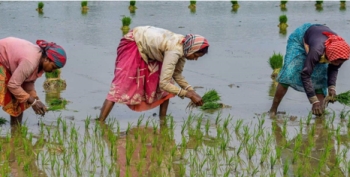A collaborative approach to Monitoring and Evaluating the Impact of Agricultural Projects on Nutrition
Abstract
The monitoring and evaluation (M&E) of agricultural projects for their impact on household food insecurity and nutrition is important, given the paucity of data documenting successes and failures in such projects, and because of the need to rapidly address possible adverse effects in such projects. Recognizing, however, the lack of capacity and/or reluctance of some agriculture project managers and planners to incorporate nutrition in their management information systems, a feasible alternative approach is needed, one capable of meeting agriculture-nutrition M&E objectives without encumbering project managers. To help overcome this, external teams of skilled individuals could carry out M&E for food security and nutrition. Baseline and monitoring data should indicate (a) the extent to which households and individuals within households have been reached by the project, (b) household food insecurity levels, dietary quality, and/or market-level indicators of food availability and prices, (c) women’s empowerment, (d) the health and sanitation environment, and (e) where appropriate, nutritional status. Additional data of primary interest to project managers also would be collected. Although ownership of nutrition issues in the field of agriculture is desirable in the long term, this approach offers a short-term means of assessing and learning from the nutrition effects of these agriculture projects in the immediate term. This is particularly important in the current environment of increasing interest in improving nutrition impact from such projects.

Authors retain all copyrights. In making a submission to World Nutrition, they are certifying that all material is theirs except quotations, as indicated, and that they have obtained permission for any photos, tables, or graphics taken from other publications or websites.




